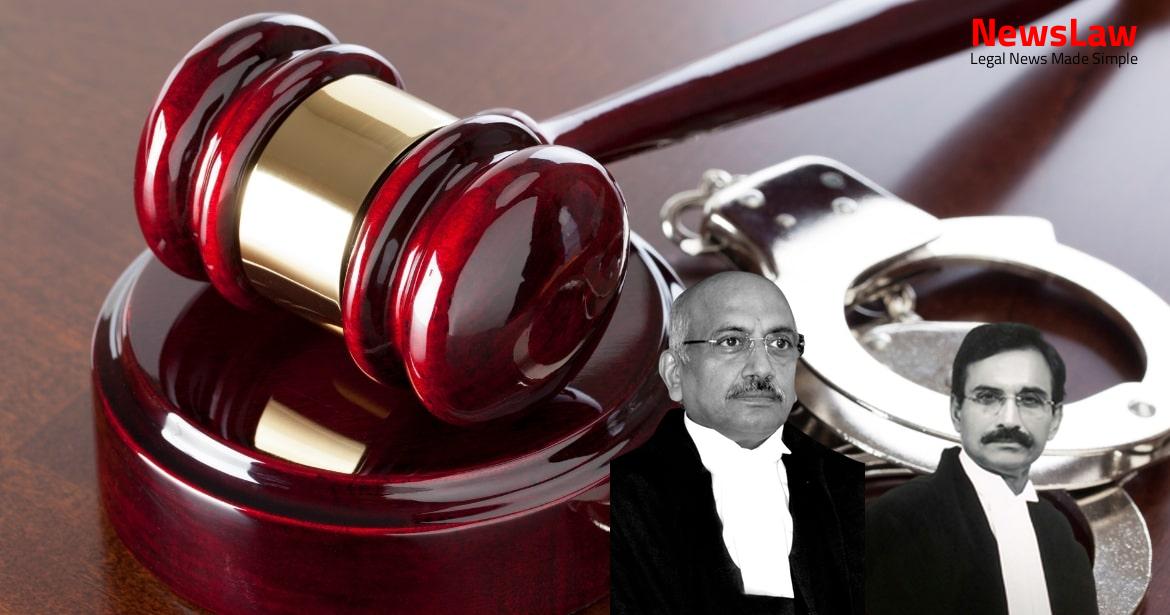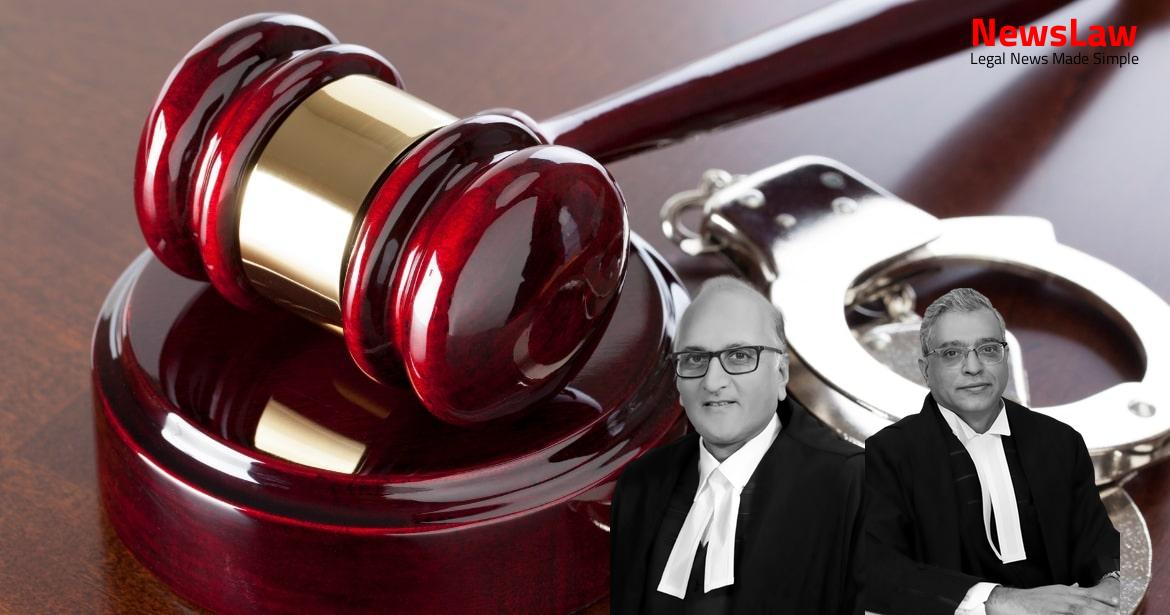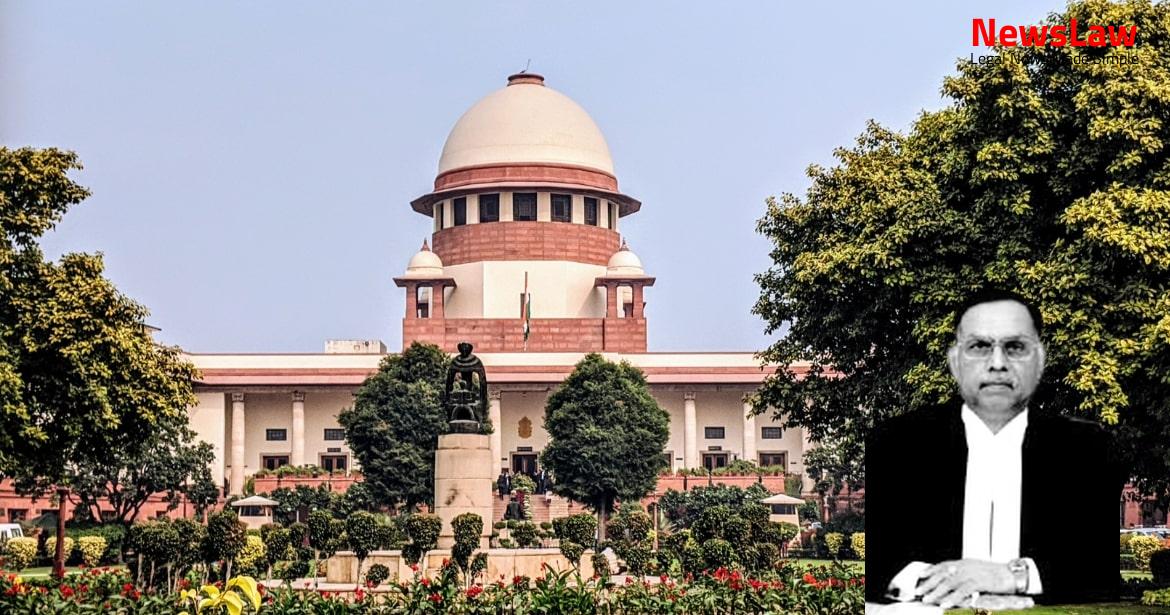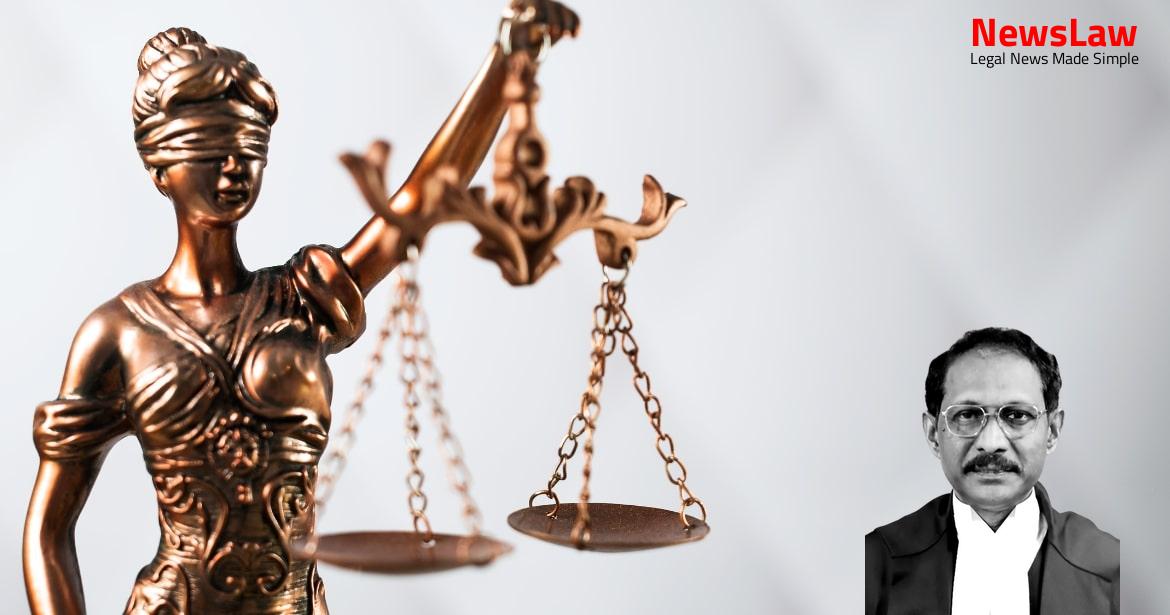A significant legal verdict was delivered by the Supreme Court Of India in the case of Sahitya v. L. Manjunatha. The appellants have been acquitted of all charges due to the prosecution’s failure to prove conspiracy beyond a reasonable doubt. The judgment highlighted issues of lack of evidence and potential prejudice to the accused, leading to the release of the appellants from all charges. This landmark decision showcases the importance of upholding justice and the rule of law in legal proceedings.
Facts
- The marriage of deceased Sahitya was solemnised with L. Manjunatha on March 10, 2006.
- Initial allegations were of demand of dowry against accused Nos. 4 and 5.
- The prosecution proceeded on the belief that accused Nos. 4 and 5 were the actual assailants.
- Dr. S. Venkataraghava conducted the postmortem and found no evidence of dowry demand or cruelty related to dowry.
- An FIR was lodged on August 25, 2009, by Smt. Anjanamma alleging that Sahitya was killed by the appellants along with others.
- Two Swamis were present during the incident when Sahitya and the Swamis were performing Puja.
- Accused Nos. 6 to 8 were acquitted by the Trial Court due to lack of evidence against them.
- Accused Nos. 4 and 5, who were considered assailants initially, turned hostile and were not apprehended.
- The relatives of the deceased were examined as witnesses but did not provide substantial support to the prosecution case.
- The Trial Court convicted the appellants and L. Manjunatha for conspiring to murder Sahitya with accused Nos. 4 and 5.
- The appellants pretended the deceased was sleeping when informing Ramesh and Saroja, casting doubts on their conduct.
- The subsequent conduct of the appellants contradicted the theory of murder by an outsider or accused Nos. 4 and 5.
- High Court observed lack of conspiracy but convicted the appellants based on inference.
- High Court acquitted L. Manjunatha but upheld the sentence on the appellants.
- Appellants were sentenced to life imprisonment and fined Rs.10,000/- each.
- Investigating Officer was criticized for introducing a dubious theory of criminal conspiracy, potentially aiding the real offenders.
- Absence of evidence and charges of conspiracy or taking the deceased’s life made the appellants’ conviction based on probabilities invalid.
Also Read: Property Inheritance Dispute: The Legacy of Chhotabhai Ashabhai Patel
Arguments
- The charges framed against accused Nos. 1 to 6 were read out.
- The learned counsel for the appellants referred to the specific charges.
- The charges against the accused were enumerated as per the court records.
Also Read: Lt. Col. Om Dutt Sharma vs. Ministry of Defence: OROP Entitlement for Army Postal Service Personnel
Analysis
- The convictions of the appellants may be based on the lack of explanation for the injuries on the deceased.
- The statement of Saroja indicates that there were five individuals performing Puja, two of them being Swamis, raising doubts on the appellants’ conviction under Section 302 IPC without a specific charge.
- Saroja’s deposition mentioning torture by the accused and involvement of unknown persons in the deceased’s house presents inconsistencies in the case.
- The High Court’s criticism of the Investigating Officer for mishandling the investigation lacks substantial evidence as per the prosecution witness’s account.
- The prosecution must prove charges beyond a reasonable doubt, linking the appellants unequivocally to the deceased’s death, which seems lacking in this case.
- The conspiracy charges against the appellants have not been substantiated by the Trial Court or the High Court.
- The case primarily relies on the testimonies of Ramesh and Saroja, the tenants living on the ground floor where the incident occurred.
- Contradictions in the testimonies regarding the actions of the appellants raise doubts on their guilt under Section 302 read with Section 34 IPC.
- The Trial Court’s dismissal of multiple charges indicates a lack of coherent evidence against the appellants.
- The concept of prejudice caused to the accused and failure of justice to vitiate trial was explained in Willie (William) Slaney v. The State of Madhya Pradesh.
- Main Pal v. State of Haryana mentioned principles relevant to omission of framing charges.
- In Mulakh Raj v. Satish Kumar, the legal position was restated succinctly.
- Prosecution failed to prove the charge of conspiracy against the appellants.
- Conviction based on the role of the appellants as conspirators cannot be sustained.
- The conviction has caused prejudice and a failure of justice.
- Hence, the appeal is allowed.
Also Read: Financial Capacity and Specific Performance: A Landmark Judgment by the Supreme Court Of India
Decision
- The appellants shall be released immediately if not required in any other case
- The appellants are acquitted of all charges leveled against them
Case Title: CHINTAMBARAMMA Vs. THE STATE OF KARNATAKA
Case Number: Crl.A. No.-001258-001258 / 2019



